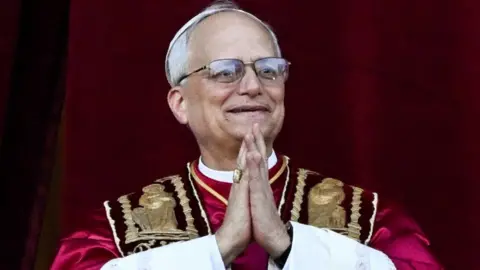The recent election of Cardinal Robert Prevost as Pope Leo XIV has sparked a global interest in the implications and historical significance of his chosen papal name. At 69 years old, Cardinal Prevost notably becomes the first American to lead the Catholic Church, an organization composed of approximately 1.4 billion adherents worldwide. His arduous journey toward the papacy began in Chicago, where he was born, and it includes extensive missionary work in Peru, where he later served as an archbishop. This background highlights his deep commitment to social outreach, especially toward marginalized communities, complicating the narrative of leadership within the Catholic Church.
A crucial inquiry surrounding the new pontiff is the tradition behind the papal name. When a new pope ascends to the papacy, one of the first decisions he makes is to select a new name that often reflects significant inspiration or homage to previous popes or saints. This practice has evolved over the last several hundred years. Historically, for more than half a millennium, popes would simply use their baptismal names until the tradition shifted towards adopting more symbolic names. These names represent either a desire to carry on the legacy of a revered predecessor or to invoke specific virtues associated with selected historical figures.
For instance, Pope Leo XIV may have chosen his name in recognition of the legacy of past pontiffs like Pope Leo I, who reigned from 440 to 461 AD. Pope Leo I is celebrated for his pivotal role in establishing peace during challenging times and is revered in papal history as one who faced external aggressions, famously confronting Attila the Hun in 452 AD. The legend surrounding that encounter—where an apparition of Saints Peter and Paul reportedly deterred Attila from invading Italy—renders Pope Leo I as a figure of remarkable valor and significance.
Additionally, Pope Leo XIII, the last pope to hold the name Leo, made a considerable impact on modern Catholic teaching and social justice. Serving from 1878 until 1903, his most notable achievement was crafting the encyclical “Rerum Novarum,” widely regarded as a foundational document on social justice, which addressed critical issues such as workers’ rights amid the Industrial Revolution.
Yet, as significant as these historical connections are, the newly elected Pope Leo XIV has not explicitly stated the rationale for adopting the name. This ambiguity invites speculation, suggesting he might aim to invoke the spirit of reform that past Leos represented or perhaps integrate those ideals into his leadership style.
Understanding papal nomenclature also illuminates the other prevalent names, such as John, which has the distinction of being the most frequently chosen name by popes throughout history. The tradition traces back to Saint John I, who served as Pope and martyr beginning in 523 AD, and the name has been continually honored, most recently with Pope John XXIII’s election in 1958.
Ultimately, the choice of a name encompasses multiple layers of both personal significance and broader symbolic implications—alluding to past legacies while also shaping the future of the Church. With Pope Leo XIV at the helm, the world traces a hint of anticipation, not only for his tenure but for the potential enacting of principles guided by centuries of church tradition and history. As he faces the contemporary challenges of the Catholic Church, his decisions and the legacy of his name will undoubtedly resonate through time, representing both a continuity of faith and a vision for reform.



